The 20th anniversary of 9/11 is right around the corner. So many people, including your students, weren’t alive when it happened. That’s shocking when you think about it because of how it changed our world practically overnight and still influences current events. So in this episode, I want to use the 9/11 Memorial artwork as a case study for bringing past (and present) events into the classroom and using art to process, reflect, practice empathy, and better understand complex issues.
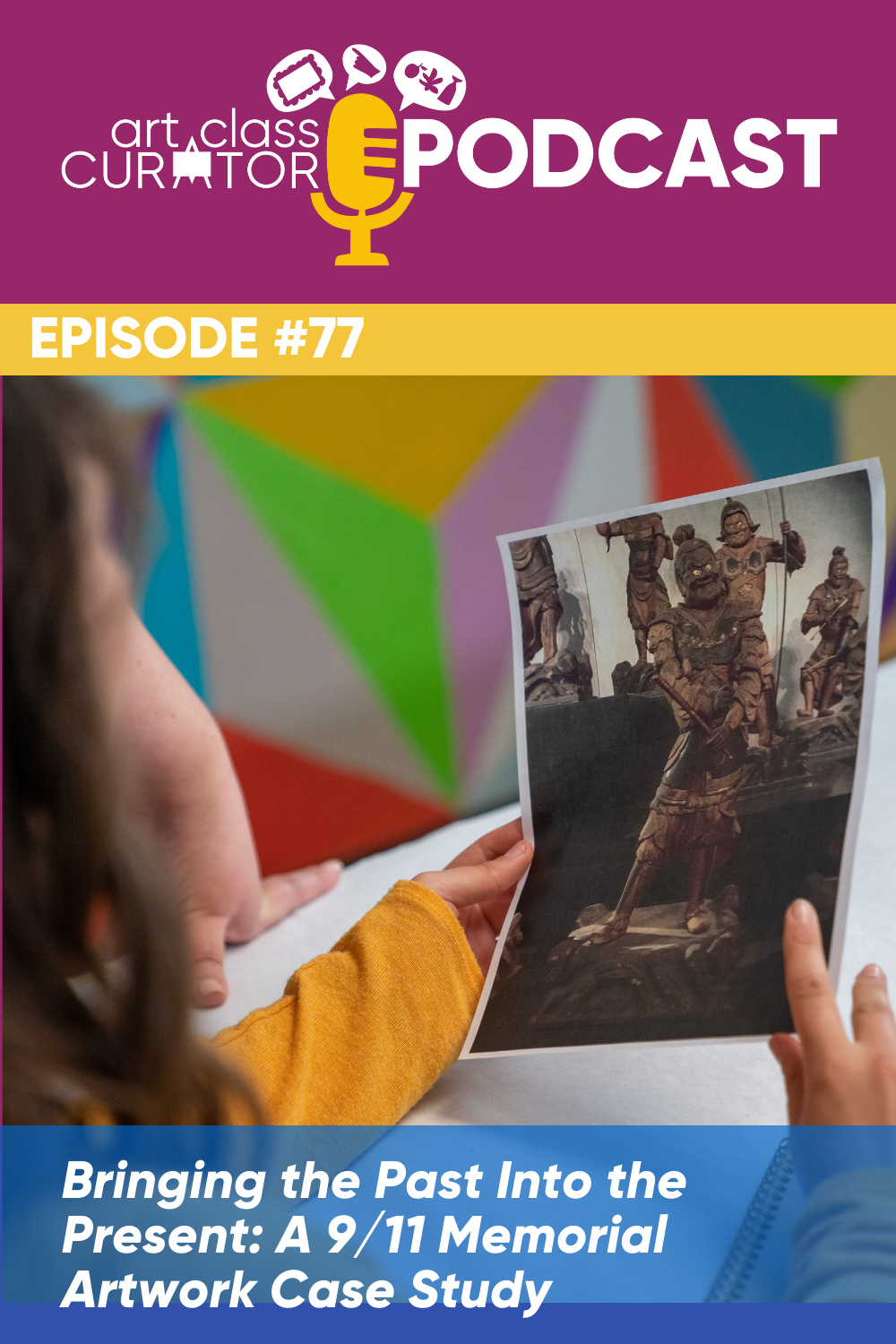
4:57 – How the 9/11 monument lesson inspired one particularly creative junior high student
8:59 – How art serves as a way for students to experience history, past and present
13:12 – A description of the memorial, who created it, and what it feels like to view it in person
20:10 – One of the lesson activities provided for the monument and other activity ideas
23:01 – Various ways you can apply this lesson (and others available in the Library) to your classroom
26:01 – How incorporating lessons like this can help you in other ways
- Free Lesson Sample
- The Curated Connections Library
- Reflecting Absence: September 11th Lesson Plans for Art Teachers
- 9/11 Memorial – PWP Landscape Architecture
Be a Podcast Guest: Submit a Voice Memo of Your Art Story (Scroll to the bottom of the page to submit your story.)
Cindy Ingram: Hello and welcome to The Art Class Curator Podcast. I am Cindy Ingram, your host and the founder of Art Class Curator, and The Curated Connections Library. We’re here to talk about teaching art with purpose and inspiration from the daily delights of creativity to the messy mishaps that come with being a teacher. Whether you’re driving home from school or cleaning up your classroom for the 15th time today, take a second, take a deep breath, relax those shoulders, and let’s get started.
Hello everyone, this is Cindy Ingram. I just wanted to give you a little bit of a warning for this episode. I just got word back from my podcast editor that said the sound on this episode is weird. It was recorded a little bit too loud. I needed to have changed some settings on my microphone but it’s not too bad. I listen to it. I think that it is still listenable. I think it won’t bother you too much but I just wanted to apologize for that. It happens to the best of us. I hope you still enjoy this content and this lesson. Thanks so much. On to the episode.
Hello everybody and welcome back to The Art Class Curator Podcast. This is Cindy Ingram. Today, we’re going to talk about how to bring current events into your classroom, how to use art as a way to talk about the things that are going on in the world, and also, the things that have gone on in the past and using art as a tool to process, to reflect, to practice empathy, to better understand complex issues, and all of that can happen in these art lessons. The artwork that I want to talk about as the case study for this topic is the 9/11 Memorial. You know probably by now that 9/11 is around the corner. It is on Saturday this week. It is actually the 20th anniversary of September 11th. What is so shocking about this to me and so many other people is that our students weren’t alive. It was such a big thing in our lives. As time passes, more and more of the population wasn’t there, wasn’t alive, didn’t feel that impact, didn’t see what happened, how it changed, how our world went from one way to another way, almost overnight.
We’re seeing that now with current events now, like that mass trigger catalyst event is happening as we speak but with September 11th, our students just weren’t there. To start out this conversation, I am going to play a clip of a conversation that I had with Robyn Smith. Robyn is an art teacher in California. She has taught pre-K through eighth grade for the past 24 years. She, at the beginning of the 2020-2021 school year, purchased our SPARK Hybrid Learning Curriculum. The SPARK Hybrid Learning Curriculum, as you probably know by now, is actually a part of The Curated Connections Library. We merged the two programs together because it didn’t feel like it made sense to sell them separately anymore. Everything that you found in the SPARK Hybrid Learning Curriculum is also now in The Curated Connections Library.
The Curated Connections Library includes over 175 works of art. A wide variety of works of art that include a lot of activities that you can use in a hybrid setting. The art projects are idea centered and open-ended. They’re not media specific. There are videos and worksheets that are available in Google Classroom format so that you can easily send them to your remote student. For those of you who are experiencing the highs and lows of remote teaching right now or quarantining, the SPARK Hybrid Learning Curriculum inside The Curated Connections Library is a great place for you to find lessons.
Anyway, if you’re interested in checking it out, head over to artclasscurator.com/join. The doors are open and are remaining open. You can head over there to check it out. But in my conversation with Robyn, she shared one of the lessons that she used from the curriculum and how it impacted her students. I love this story that she tells about her student and how he took this lesson, and created something really fun and grand out of it. I’m going to go ahead and play that clip of my conversation with Robyn right now.
Robyn Smith: I bought your SPARK curriculum and used that. That was great. I really enjoyed using that. It worked so well for the online learners and in-class learners. Actually, it worked better for the online learners because they were at home and they could find things versus what I had available in the art room.
Cindy Ingram: Things as in like supplies or as in like more information about the artwork?
Robyn Smith: I think supplies. I’ll give you an example. One of the lessons I did during 9/11 with the junior high kids was you had a lesson there. I felt like I was cheating using those lessons. It was so easy. With everything there, I put it on canvas and I was good to go. But there was a lesson about monuments and you talked about the 9/11 monument. I think that was cool because the kids didn’t know much about it unless they’d been to New York. Of course, they weren’t around at the time of 9/11. I had them interviewing their parents, “Where were you? What happened? Ask your grandparents what happened.” It was neat that they were able to come back and say, “Everybody remembers where they were when 9/11 happened.” Isn’t that crazy?
Then they had to choose a monument that they wanted to make. I had this one really creative—they were all creative—but one especially creative student who had just moved house. In the middle of doing online learning, his family moved to a new house, to a whole different area. He had a bunch of boxes around the house, so all of his projects involved moving boxes. He took a moving box and he said, “This is the monument to 2020.” One side of the box had a paper mask on it and some plastic gloves, like surgical gloves or whatever. In California, we had a lot of fires in the fall at that time. You’ve probably heard that in the news. He had flames and on one side of it was sticking out flames. Another sign, he had a big giant closed sign that flopped down because everything’s closed because of COVID. I think the third side, the riots that were happening during the fall. He had riots, he had grenades, he had all kinds of things probably you shouldn’t have had at school there. But anyway, it was very creative. I was really impressed with what he’d done.
Cindy Ingram: What I love about that story that you just said is that you’re teaching them history. In the last 20 years it was history, then they’re comparing that event to what they’re going through now because they’re also living through a big historical moment. You’re connecting it that way. He’s able to express his personal feelings about what happened and process that at the same time, and be creative and have this design challenge that was really open-ended. He was able to create something really grand out of that. You’re also having them engaged with the work of art and the 9/11 Memorial monument, and explore all of this through art. I’m just like, “Oh, that’s a beautiful teaching moment.”
Thank you so much to Robyn Smith for sharing that lesson with you guys. Like I said in the clip, I really love how layered this lesson really is. On the surface, they’re looking at our artwork. They’re talking about it. They’re making an artwork in response but there is so much more happening beneath the surface. I love how she was talking about how she had them interview their parents, so they’re getting a little oral history, a moment. They’re having a connection moment between them and their family. They are really understanding the gravity of the experience, of what that experience was like and stepping into the shoes of people who lived through that. Those experiences when you really look at the past through the lens of art and through the lens of human experience, it really connects you to other people. It helps you develop empathy. It helps you really better understand how people react, respond, and live through big things.
Artists throughout time have used art as a way to process their feelings, to make a statement about something that happened, to change someone’s mind or to influence. I’m just thinking about Guernica, which I talked about with Jenn on the podcast just recently. How Picasso wasn’t a political artist and that bombing of the town of Guernica caused him to create that work of art in response. The same thing is true of Fernando Botero who creates those really joyful paintings. He’s from Colombia. He paints pictures of fat people. Apparently, it’s supposed to be like a cubism takeoff, we’re looking at a person from different points of view, but those paintings are just so happy and joyful. There’s music. There’s dancing. There’s family things. It’s very much not political on the surface anyway but then he created an entire series of artworks about the Abu Ghraib torture scandal back in the 2000s.
Whether it is making art or whether it is looking at art, we can use art as a way to help ourselves through big things. I think that is an amazing lesson for our students. I really encourage you to bring in artwork about things that are happening in the world and about things that happened in the past. On anniversaries of things, on Veterans Day, those holidays where you’re looking back at the past and you’re remembering, it’s a really great opportunity for you as the teacher to help create a full experience for the student because chances are in their English class, they’re going to be writing about it. In their history class, they’re going to be watching a video or talking about it. Throughout their experience of the school day on September 11th or well, it’s a Saturday but this week, they’re going to be hearing about September 11th from a variety of different places. I think that curriculum is best when it is cohesive and when it is integrated, when what’s happening in social studies feeds into what happens in art. What happens in art feeds into what happens in English. What happens in English feeds into what happens in other classes.
That is giving students such an amazing connected world view because the way we do education right now in our country, in most places, we divide everything by subject, then those subject teachers don’t ever really communicate too much with the other subject teachers. I guess at the state level, we have standards. The writers of the standards, in many cases, aligned the curriculum to where English and social studies are related, and that sort of thing. But it doesn’t really happen all that intentionally, I’ve seen in my experience. I think that using contemporary events as a way to connect is really important.
In The Curated Connections Library, we do have this lesson on the September 11th Memorial. Let me tell you a little bit about the Memorial. If you want to include it in your classroom this week, we will give you some information. We do have a blog post about this lesson as well, which I will include both a link to the blog post, which is free content and a link to the membership lesson. If you’re a member, you can visit the show notes today to find this lesson.
The September 11th Memorial was designed by architects Michael Arad and Peter Walker. In the footprint of the Twin Towers, they put bottomless reflecting pools. The title of the artwork is called Reflecting Absence. It’s like a big hole, then it has waterfalls that come from the side down into a lower level. Then inside that lower level, there is a hole, another hole, a square hole that the water continues to go down into. From the side, you cannot see the bottom of that second hole. It’s just like this abyss, then it’s just this dark thing and you can’t see it. The waterfalls descend 30 feet into the basin, then the smaller one goes down another 20 feet. It’s huge.
Another thing about the experience is the waterfall creates a really loud sound. It completely drowns out the noise of the city. When I visited, it was in 2014, they were still building the Freedom Tower. There was a ton of construction in the area and you couldn’t even really hear it. In New York, you’re always hearing the cabs and the people. There’s just the cars, the honking, and all of those things but the sound of that waterfall just completely drowned out the noise. I found that to be really powerful because it allowed me to really focus on what happened and where I am. It added to the solemnity of the experience. It helped me not be distracted. It helped me go into myself and not look around, and see what everyone else was doing.
Then along the side, there are bronze plaques that have the names of everyone who died in the attacks on 9/11 and also the World Trade Center bombing from 1993. They’re all along the edge engraved into the bronze. These reflecting pools are the exact same size and shape of the actual Twin Towers. When you’re standing there in front of them, you really realize how massive the buildings were, then it also helps you imagine the devastation that took place on September 11th.
The conversations that you can have with your students about this, I think it’s really important to show video of the Memorial pictures, just don’t do it justice because of the sound, because of the scale and the size. It’s important to look at it from multiple different angles. It’s important to see and hear the full experience because it is really a beautiful experience. When discussing this with your students, you want to really ask them questions about how all of the artist’s choices contribute to the feeling that it gives the person visiting. That’s one of my favorite questions to ask about an artwork is what did the artist do to make us feel this way? Yes, you can talk about how it makes you feel and explore that. I love talking about that but it’s really fun to pick that apart and get meta with it, then be like, “Okay, well, I’m feeling really anxious because the artist did this” or “I’m feeling really sad because the artist used this color, which really impacted the emotions.”
Like I said, Peter Walker and Michael Arad were the architects in charge of the Memorial. Michael Arad is the one who created the actual Memorial, the monument. When they wanted to create the Memorial, they opened it up for submissions of designs. There were at least five thousand entries for the Memorial during this international contest that was held in 2003. Michael Arad is Israeli-American. He was actually an eyewitness to the second plane, hitting the South Tower of the World Trade Center from the roof of his building that same day. This young architect, Michael Arad, then became a partner of Handle Architects who created the Memorial. He has won several awards for his work on the Memorial and has since been selected to design other Memorials.
In addition to the main Memorial design, Michael Arad partnered with Peter Walker who was a landscape architect. He designed the unique landscaping for the Memorial. His idea was to add a forest of oak trees to create a peaceful place for reflection and contemplation. He wanted those trees to mimic the arches that were located at the base of the original towers, which were designed by architect Minoru Yamasaki. You can visit his website. It’s PWP Landscape Architecture. We’re going to link to it in the show notes. But on that site, you can see the design process, you can see the symbolism for each part of the landscape, and everything like that. It’s pretty fun to see the problem solving that went into this Memorial and the symbolism as well.
The sound of the water washes out the sounds of the city but then the trees hide the sights of the city. They create this canopy over you as you’re walking up and prepare you to enter this sacred space. You see that happen in Japanese temples and things like that where the lead up to the event, to the actual full experience is there to help prepare you. You hear the sound of water. You hear the sound of the little tinkering chimes—I’m still talking about Japan—you hear all of that. It prepares you to enter. These trees do the same thing for you. If you visit the website of PWP Landscape Architecture, you can see pictures of the trees next to pictures of the arch design that I mentioned earlier. It’s really subtle but it’s a really beautiful detail.
The types of trees that they used were white oaks, which are symbols of strength, longevity and the symbolic weight that the architects were trying to convey in the design. One of the activities in this lesson is to explore the monument through the five senses. We have a 5 Senses worksheet where the kids go through the five senses and talk about how each one of them was represented in the artwork, what would it be like to be here, what would it feel like to be here, and also exploring what 9/11 was and talking about what they already know, then sharing with them your experience of it and inviting them to interview their family, which I thought was a really great touch added by Robyn in her clip there. Then talking about what is a Memorial and why we have them. If I were teaching this in my classroom, I would then have students do independent research on different Memorials or monuments. Maybe I would have a group work together to research a monument. I would give them one or have them research one to discover on their own or give them a list of ones that they might find interesting, then they choose from that list, then give them some questions to answer about their memorial, then they present those to the class.
I always love doing activities like that because it allows you to get in extra art. If you’re doing an artwork about a particular theme, you can always then bring in other artworks, have the kids work together to analyze them, then they get to share that with their classmates, what they learned. It gives them a little more ownership over the information, over the content provided in the class. It makes them a little bit more personally connected to it because you’ve got that element of choosing the one that they want to talk about, then it makes them motivated to learn about it because they’re going to have to do a presentation about it. I think there is a lot of good in that type of activity.
Then from there, that’s when I would have the students design and create a Memorial to remember an impactful historical event. It can be something right now, like what Robyn’s student did, or it can be something meaningful to the student. Maybe it’s a Holocaust Memorial. Maybe it is a Memorial of an individual person or an event in their family, or maybe it is another big event. They get to choose, then design a monument. One of my favorite things about these SPARK Works Lessons in The Curated Connections Library is that we give you the art project ideas that are meaningful to the art project but you really get to decide how that plays out in your classroom. That’s why these projects work really well for your remote students if you’re still teaching a hybrid or remote class because you can use any supplies, you can use that Memorial project, the student that Robyn talked about, created his out of boxes. Another student could get on their iPad and do Procreate. Another student could get some grid and graph paper, and make a plan, a blueprint. There’s so many different options. These experiences, we really feel like they are a great bridge between your choice-based classrooms and your more traditional classrooms where everyone’s doing the same thing. This is a really nice combination.
But obviously, you can take these lessons, then make them more or less structured. If you want to do memorial and everybody does it this one certain way, and everybody does it with these certain materials, say you’re teaching a graphic art class and you want to introduce them to architecture software or something like that, you could do that or if you’re teaching a 3D class, you could have them make a sculpture. If you’re teaching a painting class, you can have them do a painting. You can see how they’re really highly flexible. That’s really important to me as a teacher because I never follow a lesson plan 100%. I love to add my own spin to it. I love to take in my expertise and mold that into the lesson. We love to make these lessons really flexible.
That’s the full lesson available in The Curated Connections Library. There’s a lesson plan. There are the Powerpoints you need with images, the videos we’ve curated and watched to know if they’re good or not. We have multiple worksheets. We have multiple worksheets including that 5 Senses worksheet, the What I Already Know and also What I Think worksheet, then there are videos for all of our new SPARK Work lessons. This one is one of those that includes a video. That’s really good for your remote students especially, because they might not have you there to give them some of the information. But I always recommend having them watch the video after they’ve done the activities because you really want them to think for themselves first before you give them any information.
Along these same lines of taking current events, holidays, and things like that and incorporating them into your classroom, it doesn’t have to be this long extended unit. It can just be one day this week, you go in and you talk about that 9/11 Memorial, and do a one day experience. This is really great to add into your curriculum for a lot of reasons, both logistical and for education purposes. We know the educational value of adding more works of art into your curriculum. We know it’s going to help your student’s critical thinking skills, their empathy, their connection, their tolerance, their communication skills, their self-awareness, their emotional fluency, all those things I talk about all the time but also, it’s going to help you with your lessons because when you’re planning out your lessons for a week, say one day of every week is an art connection experience that you grab from The Curated Connections Library, that is one day of every month or every week that you’ve got plans for, that you don’t have to worry about creating a lesson plan for. It’s ready to go. Even if you’re doing a completely different style of curriculum the rest of the week where you’re maybe really focused on studio or maybe there’s all sorts of other things that you could be doing in art class, this gives them that one time a week where they’re truly connecting with the works of art and doing these activities, then your lessons are done for that day.
It also is really helpful I found, you know that when you’re teaching multiple classes and if you’re doing the same project with them, there’s always one class that gets behind or one class that gets ahead or one class that half the kids were absent because they were taking a makeup test or the other half of the kids were gone the other time, they’re pull outs for something else. There are always kids being pulled out for different things and getting kids behind. That day, I always used to, as a buffer day. If one class was really far behind, we would do the art connection experience at the beginning, then give them more time to get caught up on their assignments. It was a really good way to balance out the work and fill those times.
Adding in a weekly art connection experience that’s outside of your normal curriculum also will allow you to show more works of art and create more diversity in your experiences. Say you’re doing a really comprehensive project that’s going to take multiple weeks—three, four weeks, five weeks and you’re still working on this project—that’s five weeks that they are only working on that project. They’re not getting to explore a lot of other art content as they’re doing it. Throwing in these art connection days will allow you to show your students work from around the world, from across times and really allow them to experience all that art has to offer. It’s like bonus art throughout their lives.
That’s my episode for today. I hope it encourages you to bring this artwork into your curriculum this week or if you’re watching this after September 11th, you still can bring it in or save it for next year. If you want to download this lesson, you can get it in The Curated Connections Library. If you are not a member, you can head over to artclasscurator.com/join. As a bonus for listening to this episode, I am going to offer you $10 off of your first month. If you are not a member and you want to come in, and check it out, just enter the coupon code “Memorial”. That will give you $10 off your first month’s membership. That is for the Museum Level membership. We have two levels. If you get the Gallery Level membership, this artwork is from a past month, so it won’t be in your membership. Make sure you get the Museum Level membership to access this lesson. Thank you so much for listening today. I will be back next week. Have a wonderful day, bye.
When you’re a teacher, one thing is certain, the lesson planning never ends. The Curated Connections Library is here to help with hundreds of art connection lessons and activities. Our signature SPARK Works lessons include everything you need to teach an artwork every single week. Each lesson features one diverse and captivating work of art and is complete with discussion questions, engaging activities to create deeper art connections, and related art project ideas. With unique worksheets and PowerPoint presentations, every lesson is classroom-ready. Get your free SPARK Works lesson and take a break from lesson planning by going to artclasscurator.com/freelesson.
Thank you so much for listening to The Art Class Curator Podcast. If you like what you hear, please subscribe and give us an honest rating on iTunes to help other teachers find us, and hear these amazing art conversations and art teacher insights. Be sure to tune in next week for more art inspiration and curated conversations.
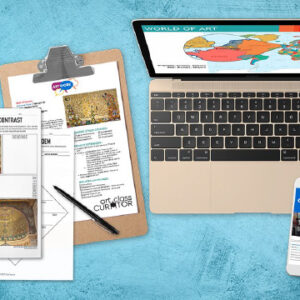
Free Lesson!
Get a Free Lesson Sample
Get a free lesson download!
Members of the Curated Connections Library get nearly 200 SPARKworks lessons that include everything you need to implement an artwork a week experience in your classroom! Click the button below to get a sample SPARKworks lesson–it includes a lesson plan, PowerPoint, and supplemental worksheets/handouts.
Subscribe and Review in iTunes
Have you subscribed to the podcast? I don’t want you to miss an episode and we have a lot of good topics and guests coming up! Click here to subscribe on iTunes!
If you are feeling extra kind, I would LOVE it if you left us a review on iTunes too! These reviews help others find the podcast and I truly love reading your feedback. You can click here to review and select “Write a Review” and let me know what you love best about the podcast!


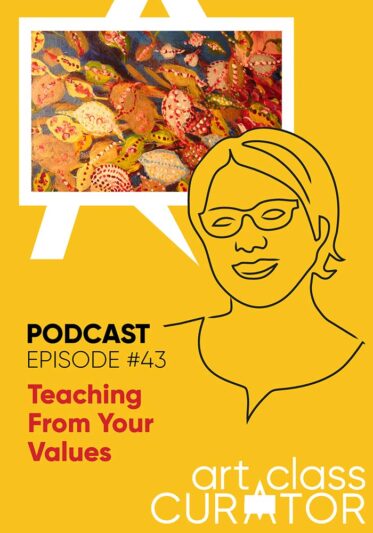
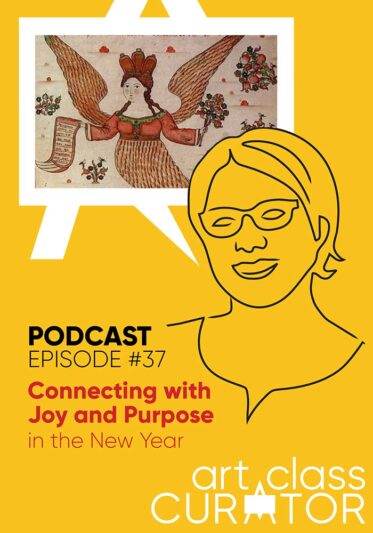
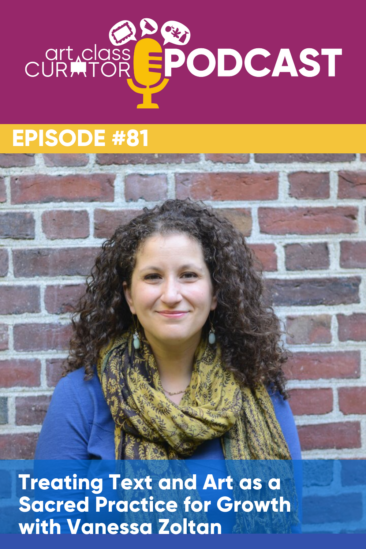
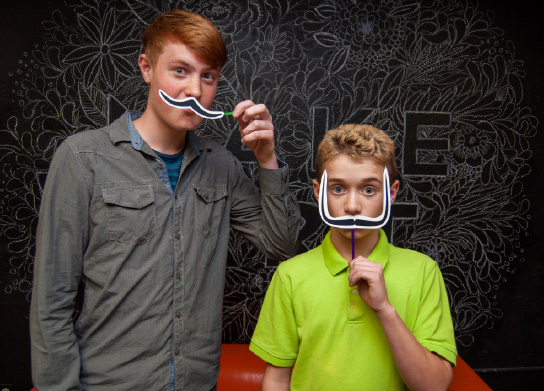
Leave a Comment